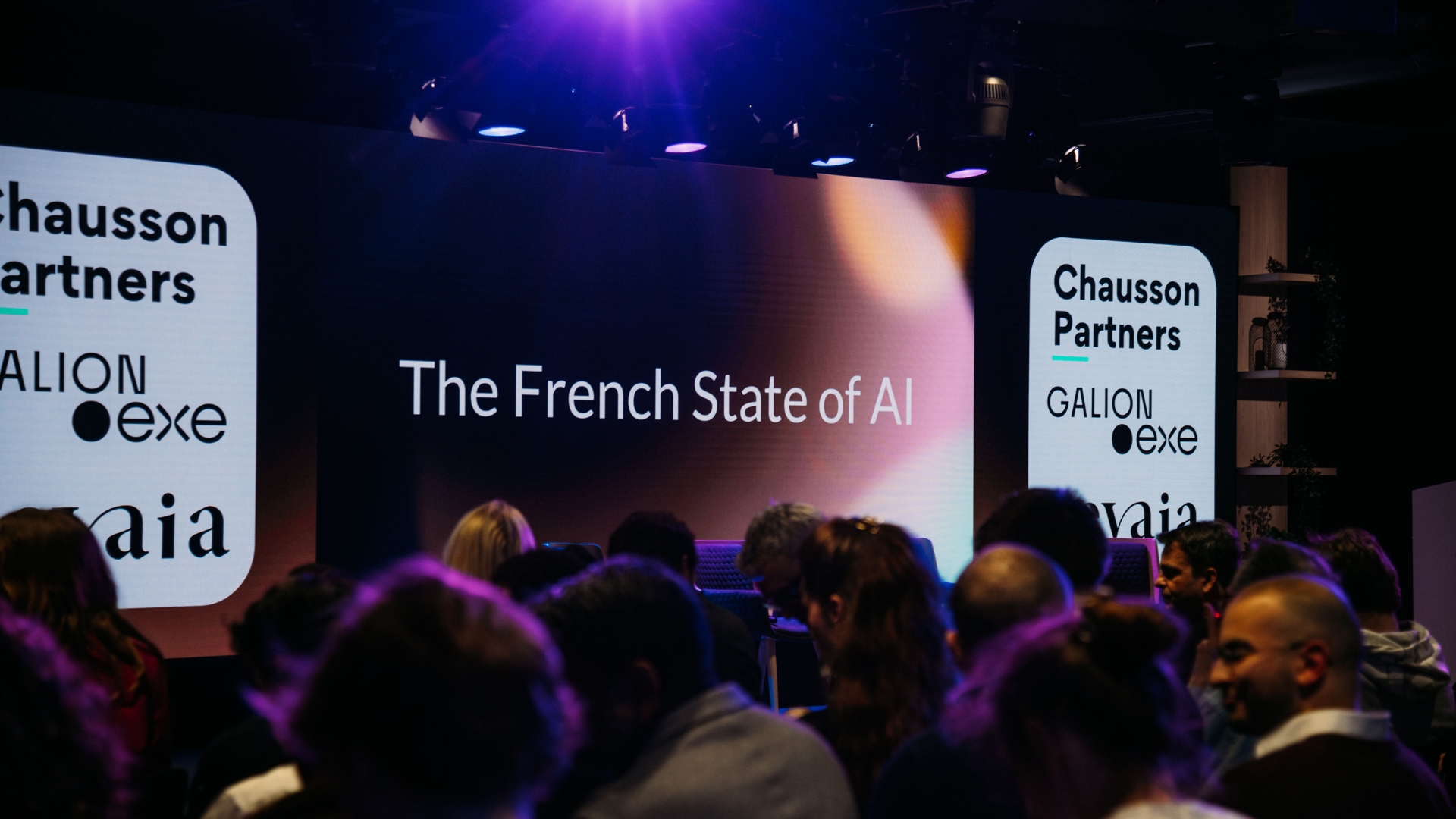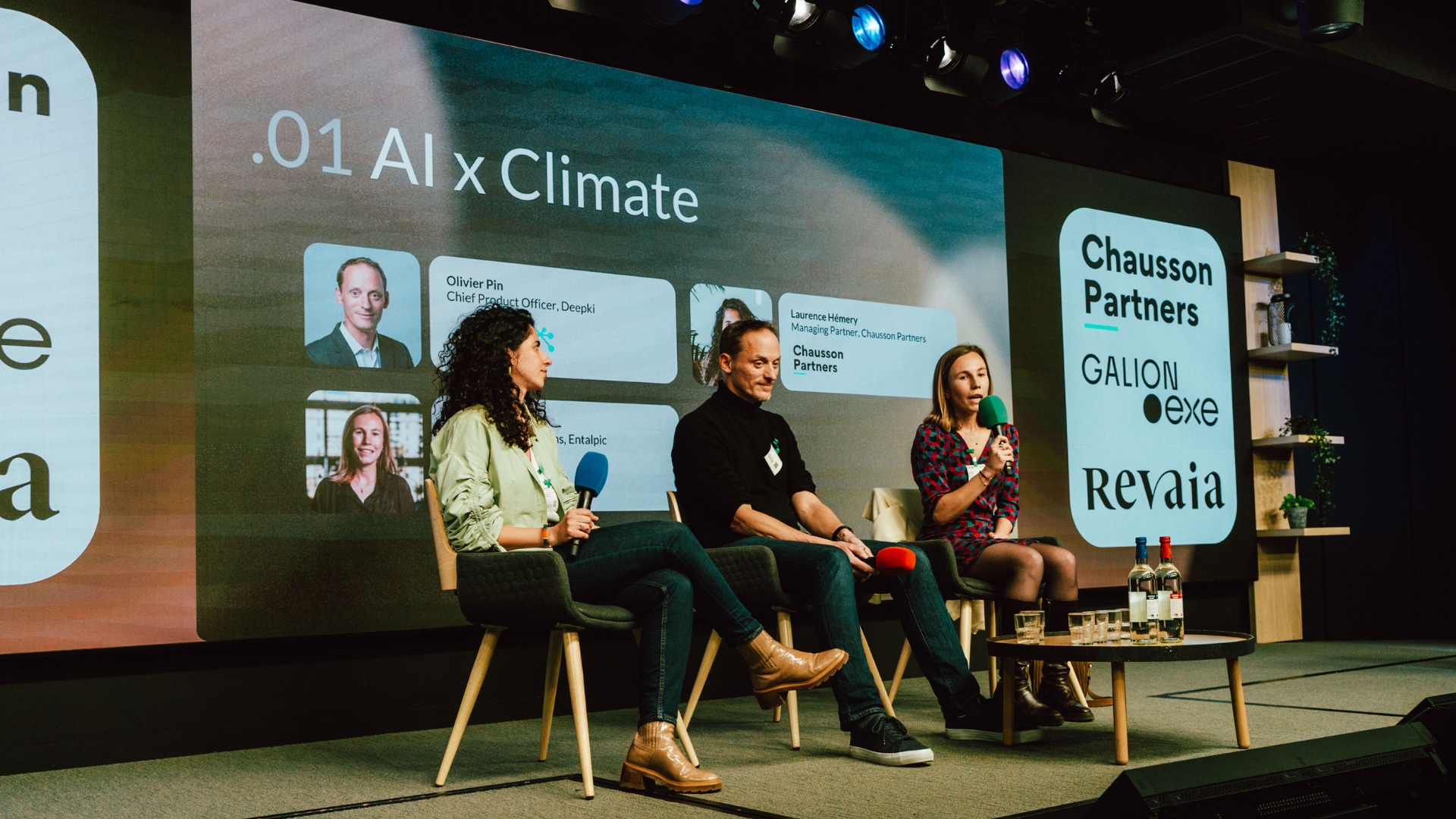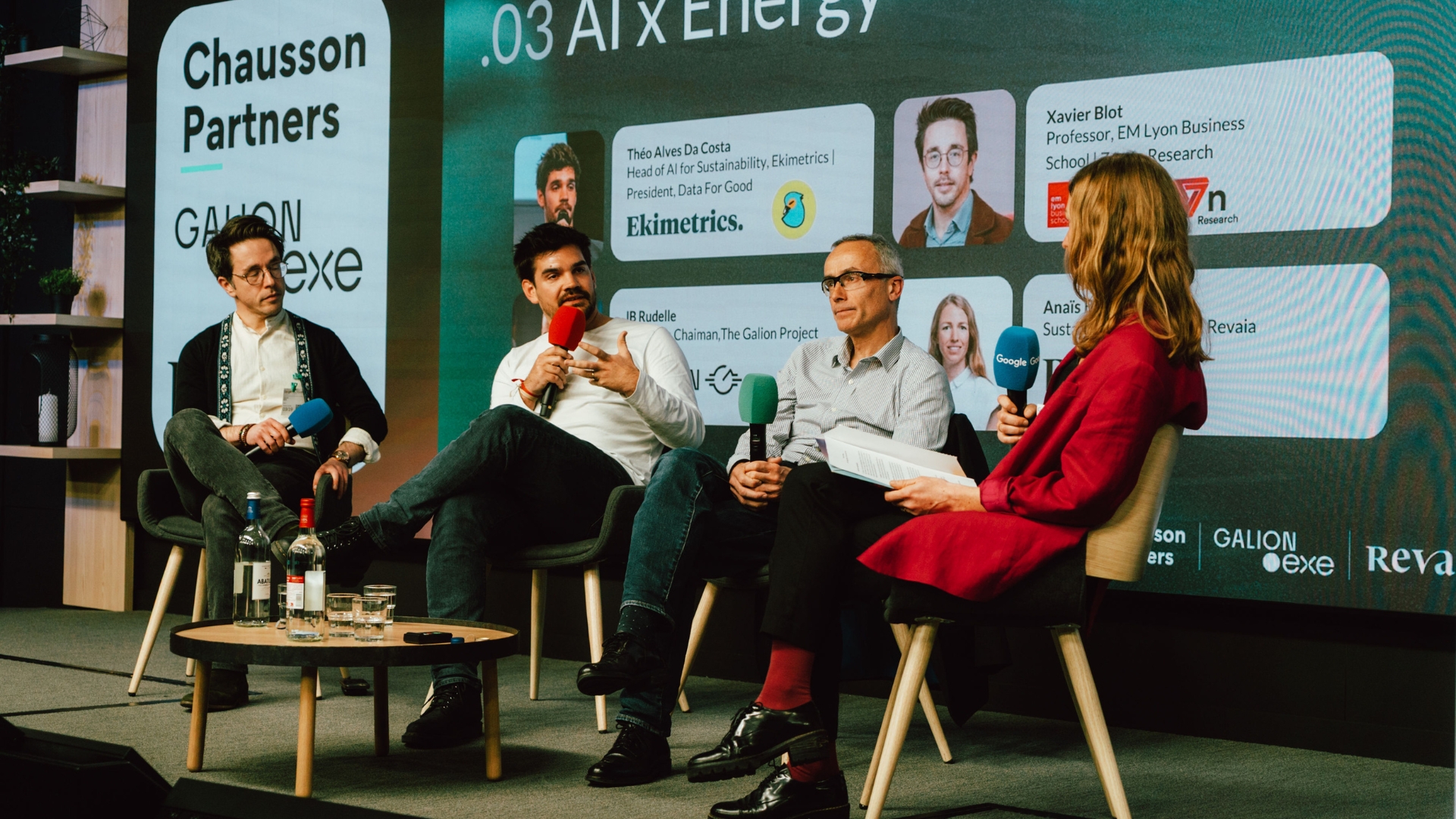
Balancing Act: AI's Role in Climate Solutions and Energy Challenges
Artificial Intelligence stands at a pivotal crossroads in the climate and energy transition.
As the French AI ecosystem continues its meteoric rise—driven by record-breaking investments, talent concentration, and infrastructure capacity—its growing footprint is beginning to clash with sustainability imperatives.
While AI offers groundbreaking tools to combat the climate crisis, from energy optimization to the discovery of new materials, it is also becoming a voracious energy consumer in its own right.
This was a key theme highlighted in "The French AI Report 2024: Key Challenges, Financing Trends, and Emerging Champions." Revaia partnered with Galion.exe, and Chausson Partners to produce the report as part of the February 2025 Summit for AI Action.
The AI Report made it clear that the dual challenge of AI's environmental promise and energy burden is not a future concern—it's a current inflection point. As the report states: “AI’s growing energy demands require efficiency innovations and grid investments for sustainable scaling.”
France, home to one of the world’s most dynamic AI hubs, is uniquely positioned in this debate. Its decarbonized electricity mix, thriving startup ecosystem, and increasing political momentum around sustainable innovation set the stage for both opportunity and responsibility.
To further explore this critical topic and to celebrate the release of the report, the three partners organized an evening of discussions at Google’s Paris office that brought together industry leaders and experts. The intersection of artificial intelligence and sustainability was the focus of two thought-provoking panels that explored AI's dual nature as both a potential solution for climate challenges and a growing energy consumer in its own right.
AI in Climate Solutions: From Data Centers to New Materials
The first panel, moderated by Laurence Hémery of Chausson Finance, featured Olivier Pin, Chief Product Officer at Deepki, and Lucile Ritchie from Entalpic, representing two distinct approaches to leveraging AI for sustainability.

Laurence Hémery, Olivier Pin, Lucile Ritchie
Deepki is a 10-year-old company with 400 employees. "Our Sustainability SaaS solution helps real estate players manage climate risk through data-driven insights, improve the financial performance of assets and comply with net zero regulations and investor requirements," explained Pin. The company utilizes various AI technologies throughout its product lifecycle, including data extraction from energy invoices to analyze usage patterns, and simulation of improvements to predict energy savings. Additionally, predictive analytics help forecast energy consumption trends and assess the impacts of sustainability initiatives.
"We are building a digital twin of every building. With a mix of thermodynamics, physics, and AI, we are able to model them and understand each time you do an insulation or you change lighting, how much you're going to save in terms of energy," Pin said.
In contrast, Entalpic represents a different application of AI for climate solutions. The less-than-year-old startup builds an AI platform to discover new materials for carbon-intensive industries. "What we're building is an AI platform applied to climate in the sense that we aim to discover new materials and optimize existing industrial processes, making them more sustainable." Ritchie explained.
Entalpic's approach combines both predictive and generative AI models. "The generative model that we're building is using models called GFlowNets," said Ritchie. "We're not doing life science. So we're not generating molecules...It's modeling materials."
Both speakers acknowledged that the emergence of generative AI and large language models (LLMs) has created both opportunities and challenges for their companies' positioning. For Deepki, client expectations have shifted dramatically.
"Our customers are eager to stay ahead of trends and want clarity on how AI fits into our roadmap and product offerings," Pin stated. "It’s noteworthy that while our audience may not always be deeply involved in technology, they recognize the importance of this wave. They are keen to understand our commitment to integrating AI and appreciate having a strategic plan that not only addresses current trends but also effectively navigates the potential challenges that come with it."
For Entalpic, which works with chemical and industrial groups, the challenge is slightly different. "Chemistry is one of the industries with the least penetration today of AI. So there's a real need for evangelization in that world, demonstrating capabilities of AI for example to accelerate R&D processes," Ritchie said.
Both companies are seeing shifts in how sustainability is valued by their clients. While regulatory pressures initially drove demand, economic incentives are increasingly important.
Pin emphasized the importance of this evolution, stating, "Investing in energy-efficient buildings is not only a responsible choice but also a strategic business move. Such properties tend to be more attractive in the market, which enhances their liquidity. This means you can sell them at a premium price and find tenants more easily. Additionally, energy efficiency can provide higher profit margins for rentals, making it a win-win situation for property owners."
AI and Energy: A Growing Challenge
The second panel delved deeper into AI's energy implications, with moderator Anaïs Blarel, Revaia’s Sustainability & ESG Manager, guiding a discussion between Théo Alves Da Costa from Ekimetrics and Data for Good, Xavier Blot of Zenon Research and EM Lyon Business School, and JB Rudelle of The Galion Project.

Xavier Blot, Théo Alves Da Costa, JB Rudelle, Anaïs Blarel
Alves Da Costa presented a sobering picture of AI's growing energy demands. "Data centers in the world are around two to 4% of electricity, and that's different depending on the region," he explained. "AI is maybe around six to 10% of the electricity consumption of data centers. So it's quite small, but the actual trajectory is still really frightening."
He warned that current projections show data centers doubling or tripling their electricity consumption in the coming years, with AI's portion growing even faster. "AI’s part of it is expected to be at least five-fold more than what it is today, becoming more than 50% of the electricity consumption of data centers," he said.
Blot elaborated on the infrastructure challenges this growth presents. "The grid is the main bottleneck," he explained, noting that developing new energy capacity takes time. "If we take the example of the US, usually you can launch a solar farm in two to four years... nuclear energy is out of the game because it's too long."
This has led to new approaches to powering data centers. "We circled back to solar, plus batteries... but in different order strategies, such as to bypass the grid behind-the-metter for instance, which for many actors is something permitting interconnections, updating of the grid—all these things take a lot of time," Blot said.
Rudelle brought his experience from scaling Criteo, where energy optimization was critical during rapid growth. "Energy efficiency is very much linked to infrastructure," he explained. "At Criteo, during the hyperscale phase, we were adding between 15 and 20,000 new servers every year."
He emphasized the importance of optimization: "As we were doubling our traffic, we were doubling the cost of our infrastructure...But we were doing a terrible job, because if you do that, basically you are doing zero economies of scale…As you double your traffic, you need to increase your cost of infrastructure by a factor of 1.5."
When asked if AI efficiency gains could offset growing consumption, Alves Da Costa was skeptical: "Even if we have a solution... it's the question of the Jevons paradox. When you make it smaller, when you optimize something, you just create some new usages."
He pointed to newer AI applications like Deep Research and tools for generating videos, which are "much more energy consuming, but by a factor of maybe 10,000 or 100,000 times."
AI as a Solution for Energy Transition?
The panel also addressed whether AI could help optimize energy systems. Blot highlighted AI's potential for renewable energy: "When you have a look at renewables, they are intermittent, but they are predictable. So anything that can increase that predictability would be very important."
He also emphasized the importance of local solutions: "We need a whole new generation of models for system monitoring optimization, for grid balancing... demand response, storage into batch batteries. And if you can do that at the local level, for micro grids, energy parks, you can have what we call a strong feedback loop."
Rudelle took a broader view of AI's potential impact on sustainability. "The real impact of AI, as I see it, is going to be indirect. AI is a general purpose technology, which hopefully... is going to boost productivity. And boosting productivity of the general economy is going to bring more money, and we need a lot of money to move to a low carbon economy."
When asked if AI would ultimately bring more benefits than drawbacks for energy and climate, opinions were divided. Alves Da Costa was pessimistic: "Sam Altman published a manifesto saying, 'If we build a superintelligence, it will solve climate change.' Man, you have billions—just solve it right now. You don't need a superintelligence to do it."
Rudelle offered a more nuanced view: "Up to now, we were capable to replace existing high carbon electricity with low carbon electricity at the right pace, with the growth of data centers. Right now we're at the bottleneck... but at the same time, the promises of AI are so amazing in terms of productivity gain... that it is very hard today to have a definite answer."
Blot concluded with a focus on practical solutions: "We have a large number of solutions already out there. You already have scientists working on efficiency gains...This is mostly a political will."